AMD and partners show off premium AM5 motherboards for upcoming Ryzen 7000 CPUs
Motherboards From ASRock, Asus, Biostar, Gigabyte and MSI detailed.

AMD held a public webinar event overnight where it invited its motherboard partners to showcase their premium AM5 motherboards. We got a good look at many high end boards, including a rundown of specs and key design features.
AMD invited representatives from each motherboard manufacturer to talk about their high end X670E motherboards. These boards support AMD’s upcoming Ryzen 7000 series CPUs based on the Zen 4 architecture. AM5 motherboards include the new LGA1718 socket, which itself is a fundamental change from the PGA AM4 socket. The pins are now on the motherboard, rather than the CPU.
AM5 includes PCI Express 5.0 support. Most will include 16 lanes across one or two physical 16x slots, as well as four dedicated lanes for a PCIe 5.0 SSD. The AM5 platform also includes DDR5 memory support, a higher power delivery specification and in a welcome move, compatibility with AM4 CPU coolers. This means virtually any cooler released in the last five or more years will be AM5 compatible.
The CPUs themselves are to be released in September. So for now, some of the specifics including performance, memory and overclocking capabilities are yet to be revealed, but this motherboard showcase gives us a welcome glimpse into what we can expect from the new platform. So, in alphabetical order, let’s begin with what Asrock is bringing to the party.
ASRock
ASRock showcased five X670E motherboards. The flagship is the X670E Taichi Carrara, a special edition board built to celebrate ASRock’s 20-year anniversary. It includes a distinct marble aesthetic, so look out for some interesting mod builds with that one. The X670E Taichi includes a 26-phase VRM, and Thunderbolt 4 support.
Interestingly, Asrock will release several cheaper X670E boards. The Steel Legend and Pro are traditionally not known as high end models, so these promise to bring X670E features down to lower price points.
Some of the highlights include USB4 with fast charging and M.2 cooling with fan support. It’s looking like high end PCIe 5.0 drive are going to be a bit on the toasty side.
Keep up to date with the most important stories and the best deals, as picked by the PC Gamer team.
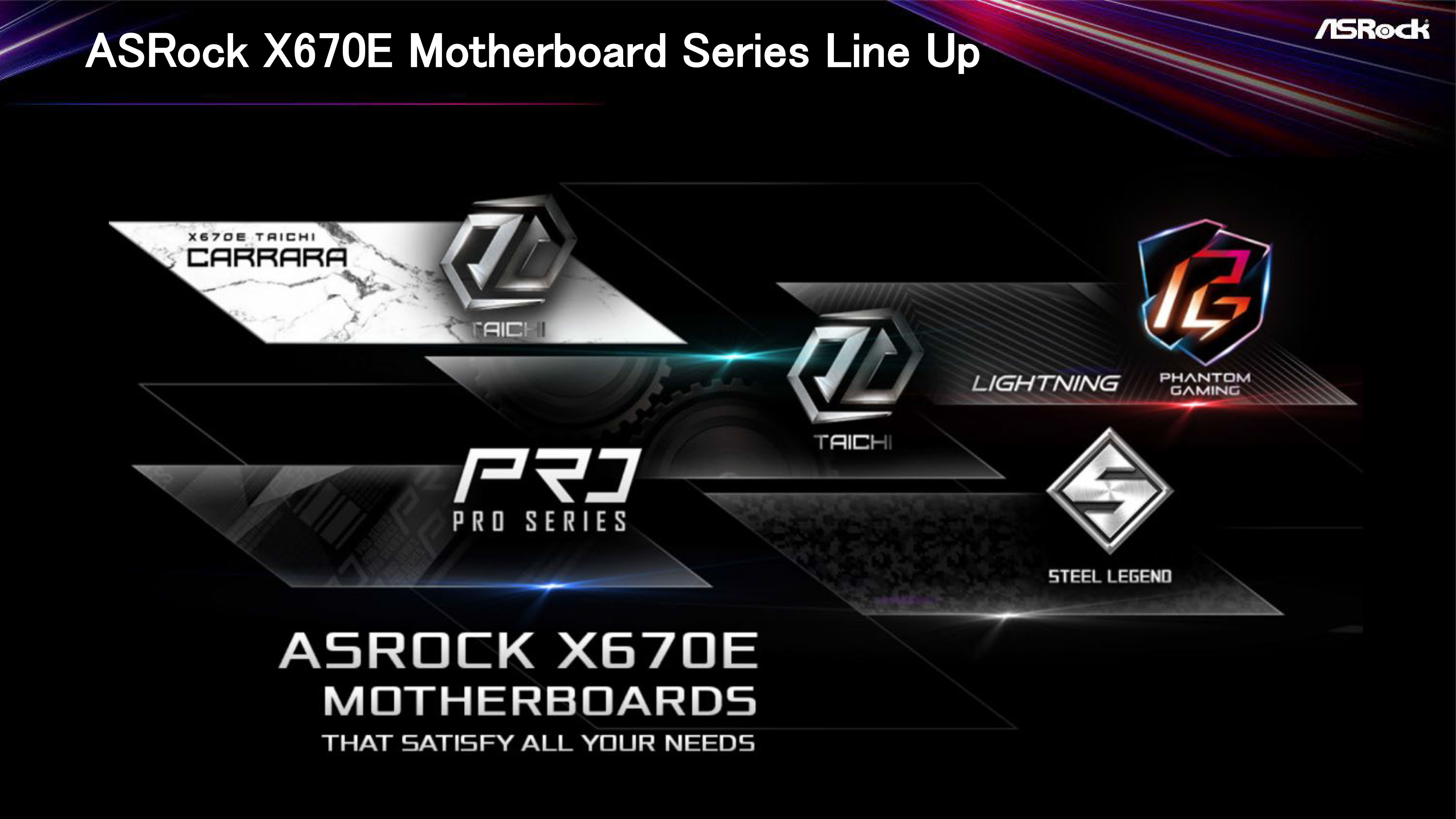


Asus
Asus began by showing off its ROG Crosshair X670E Extreme. This board has stunning connectivity options, with loads of USB including USB4, 10G and 2.5G LAN plus Wi-Fi 6E. It comes with support for up to five M.2 drives, with up to three supporting PCIe 5.0 if you use the bundled add-in card. It’s got dual PCIe 5.0 PCIe slots, high end VRM and audio solutions, as well as what Asus is calling the AniMe Matrix LED display. Don’t expect this one to be affordable!
The Crosshair X670E Hero doesn’t look like it loses all that much compared to the Extreme. It loses the 10G LAN and AniMe display but still packs a mighty VRM and loads of connectivity support including dual USB 4 Type-C.
At a glance it looks like Asus is including just about every conceivable feature. I personally look forward to seeing the rumoured Crosshair Apex.
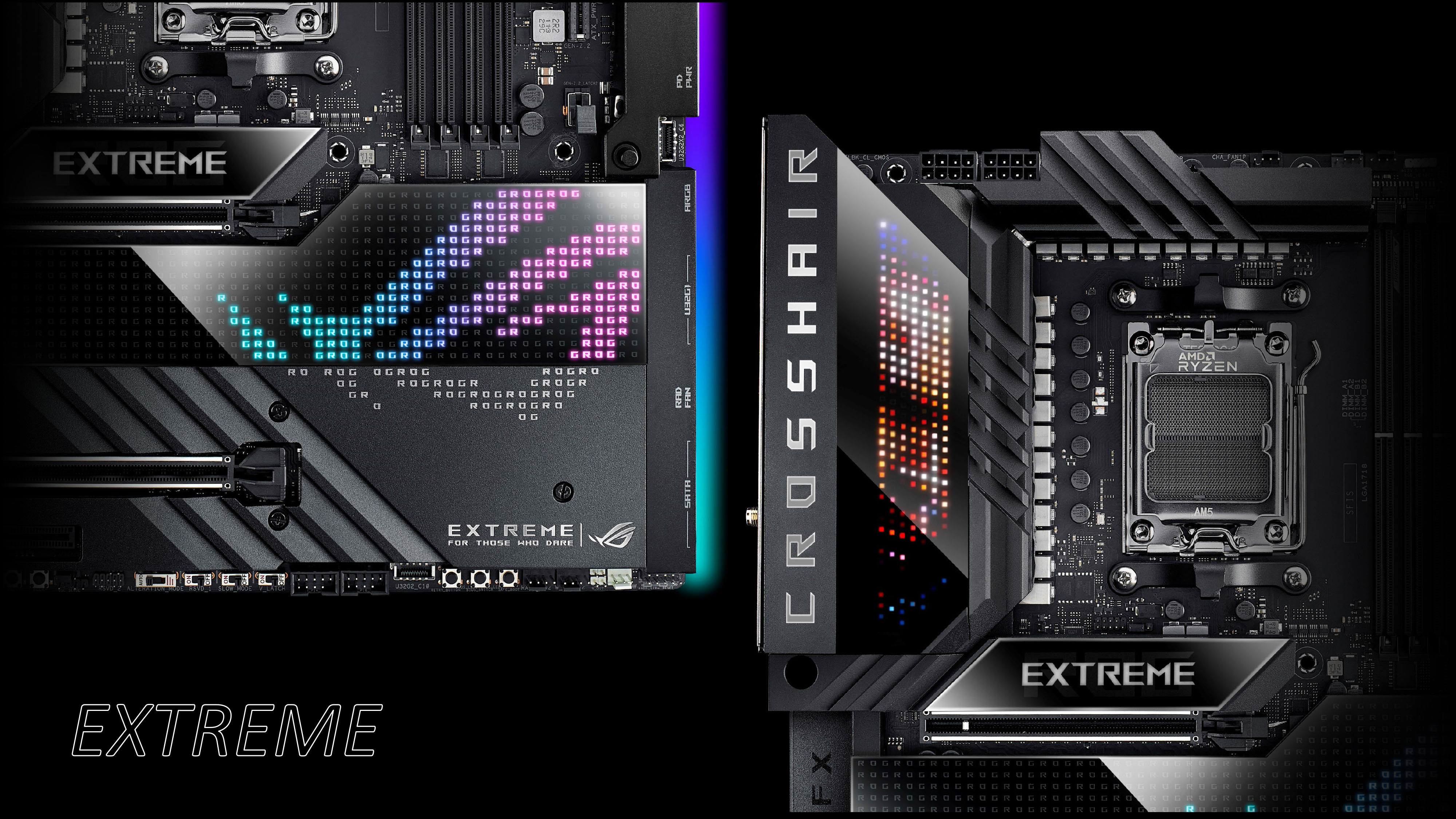
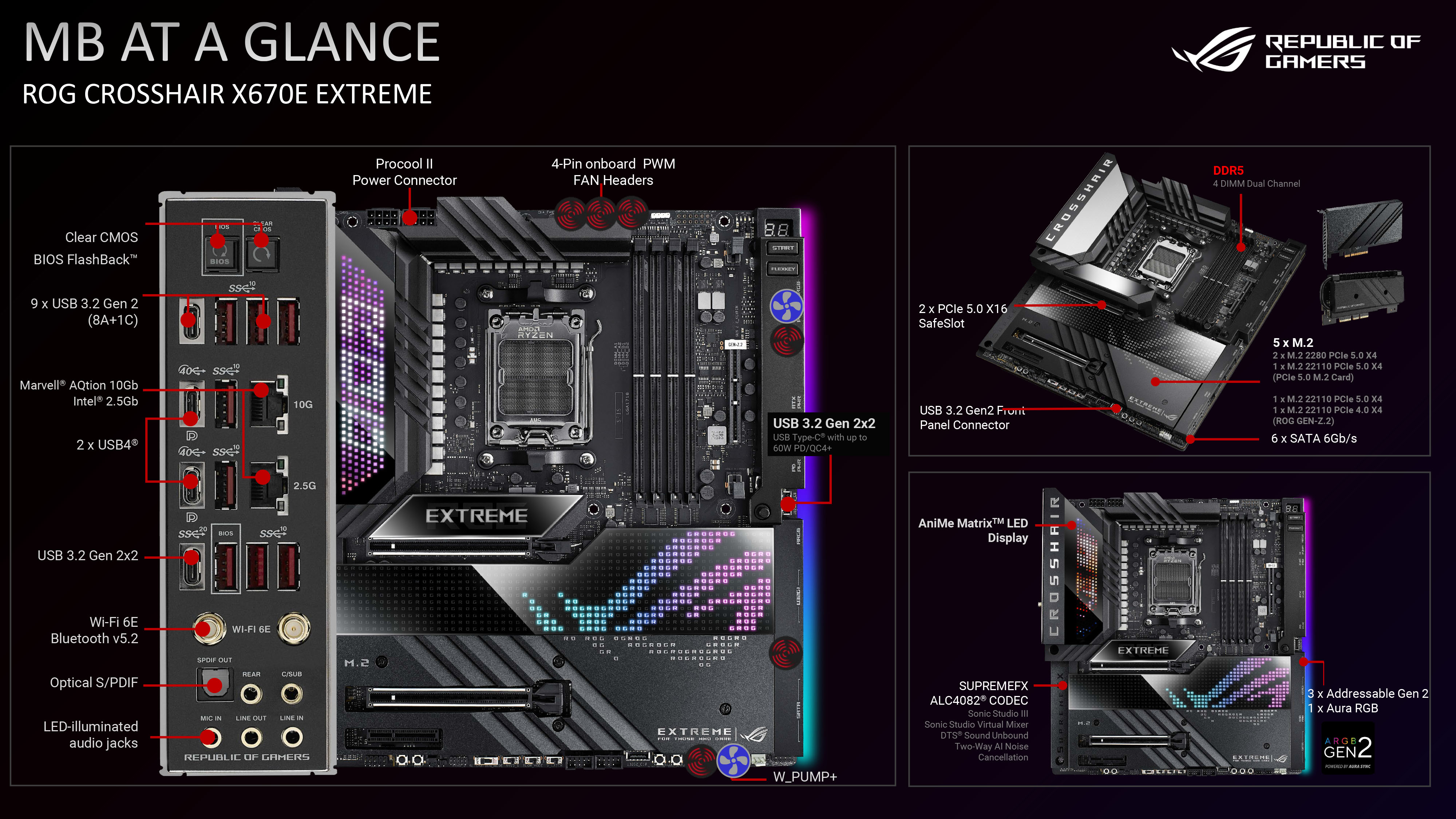
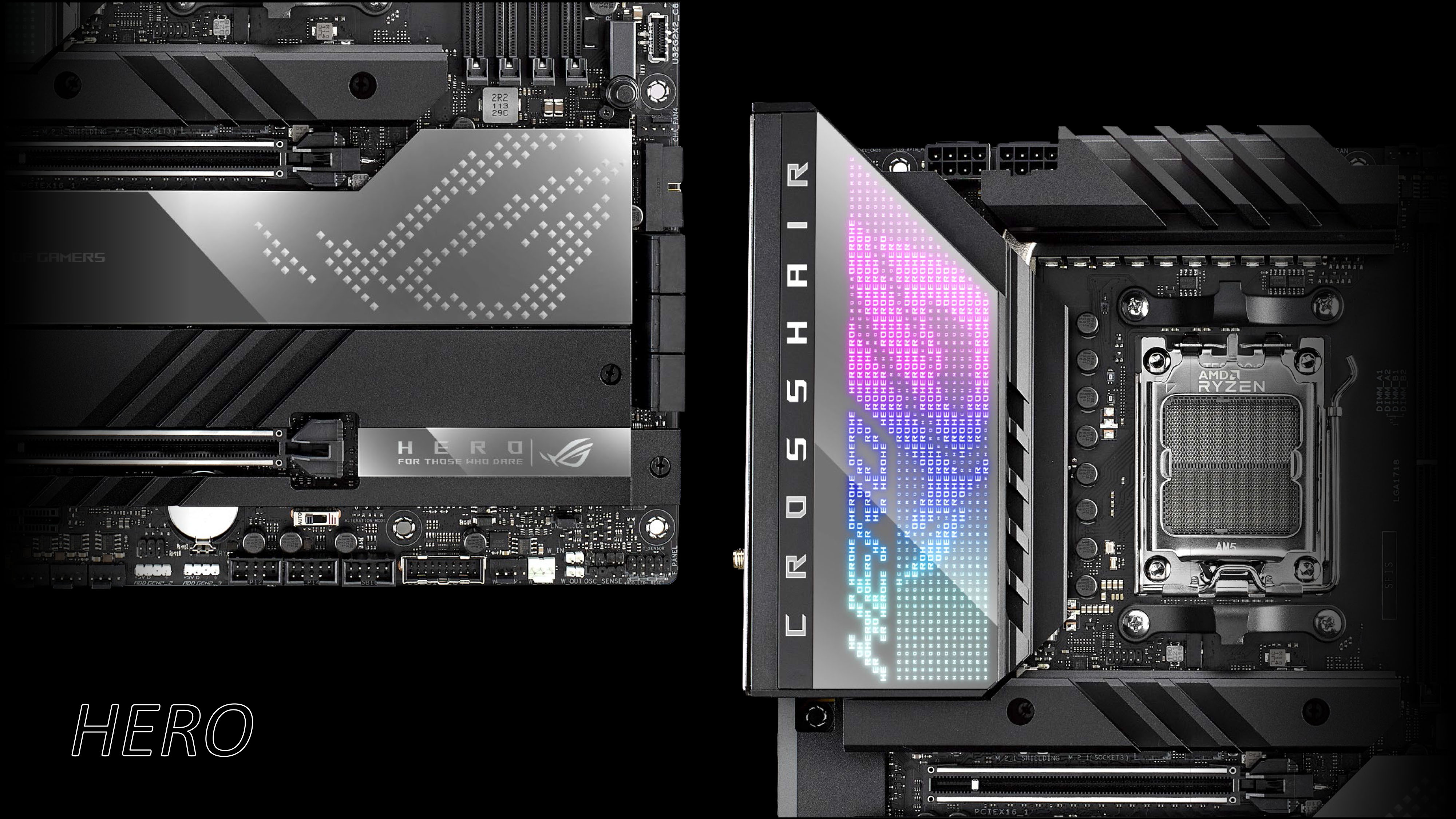

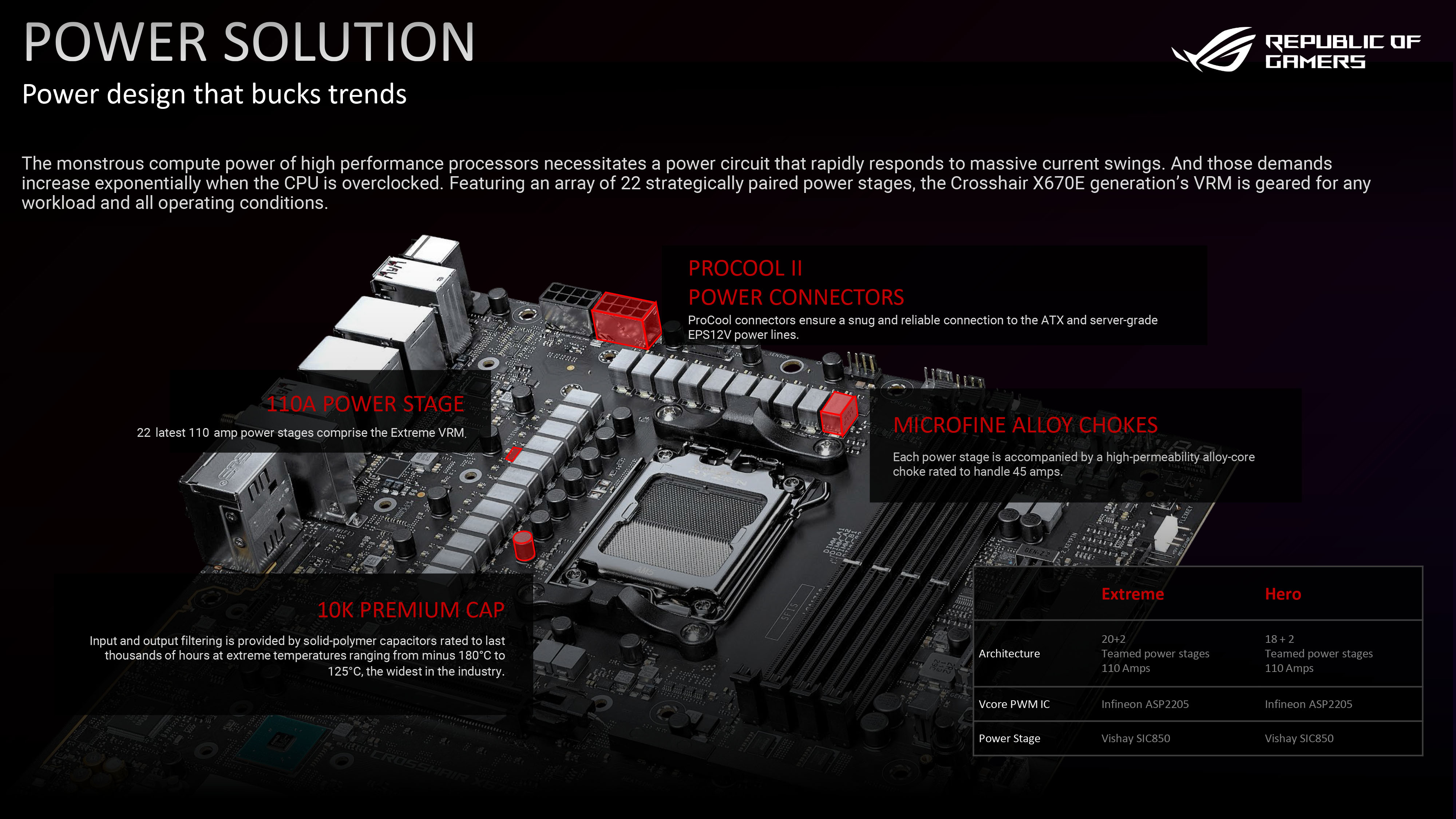

Biostar
Biostar products don't have the profile of the 'big 4', but at a glance, the Valkyrie certainly looks like a premium board. It’s got a powerful 22-phase 105a VRM, plenty of USB (but not USB 4) and triple PCIe slots.
It has dual PCIe 5.0 M.2 slots and it includes HDMI 2.1 and DP 1.4 display support for use with Ryzen 7000’s new onboard graphics functionality.
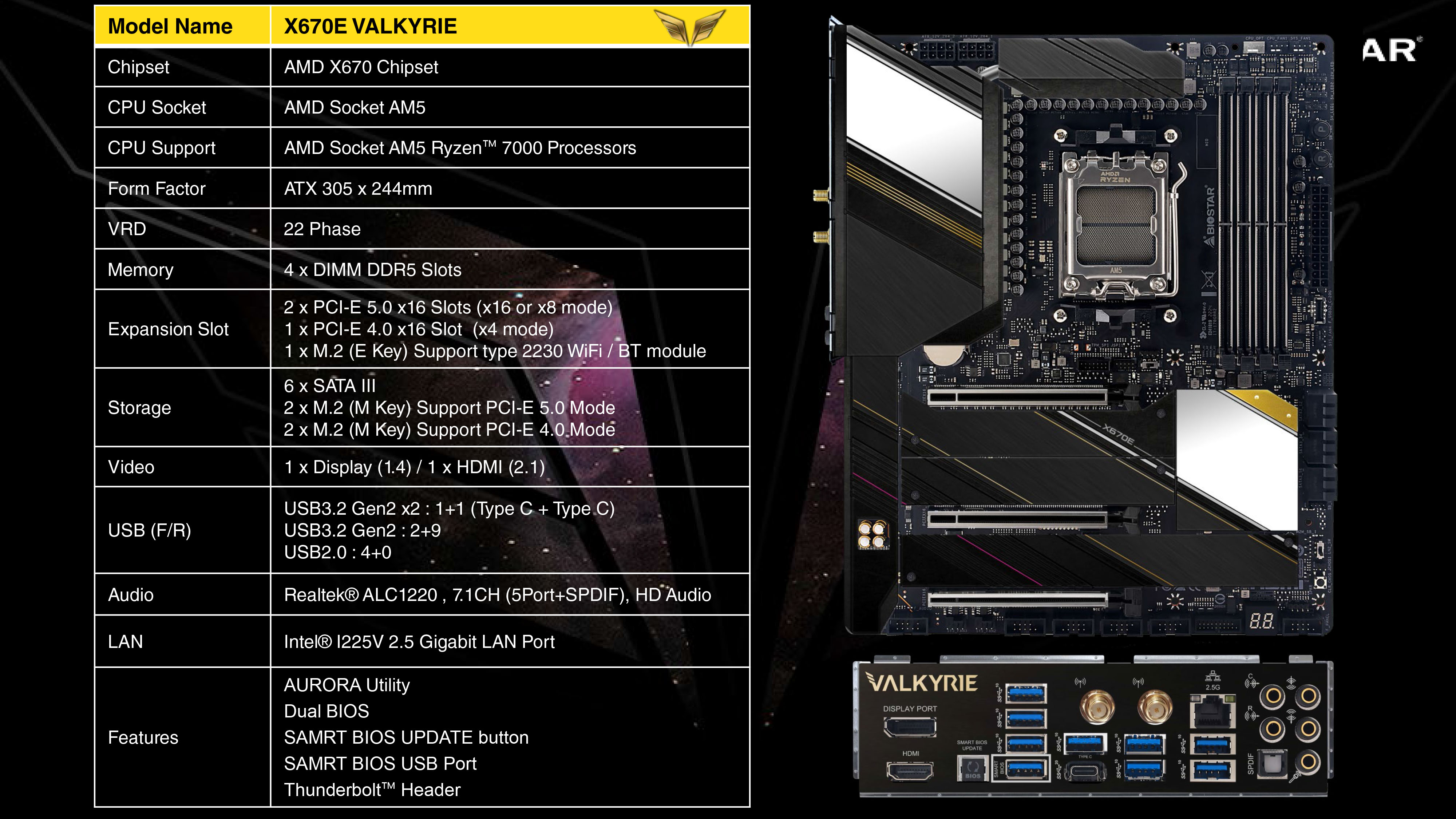
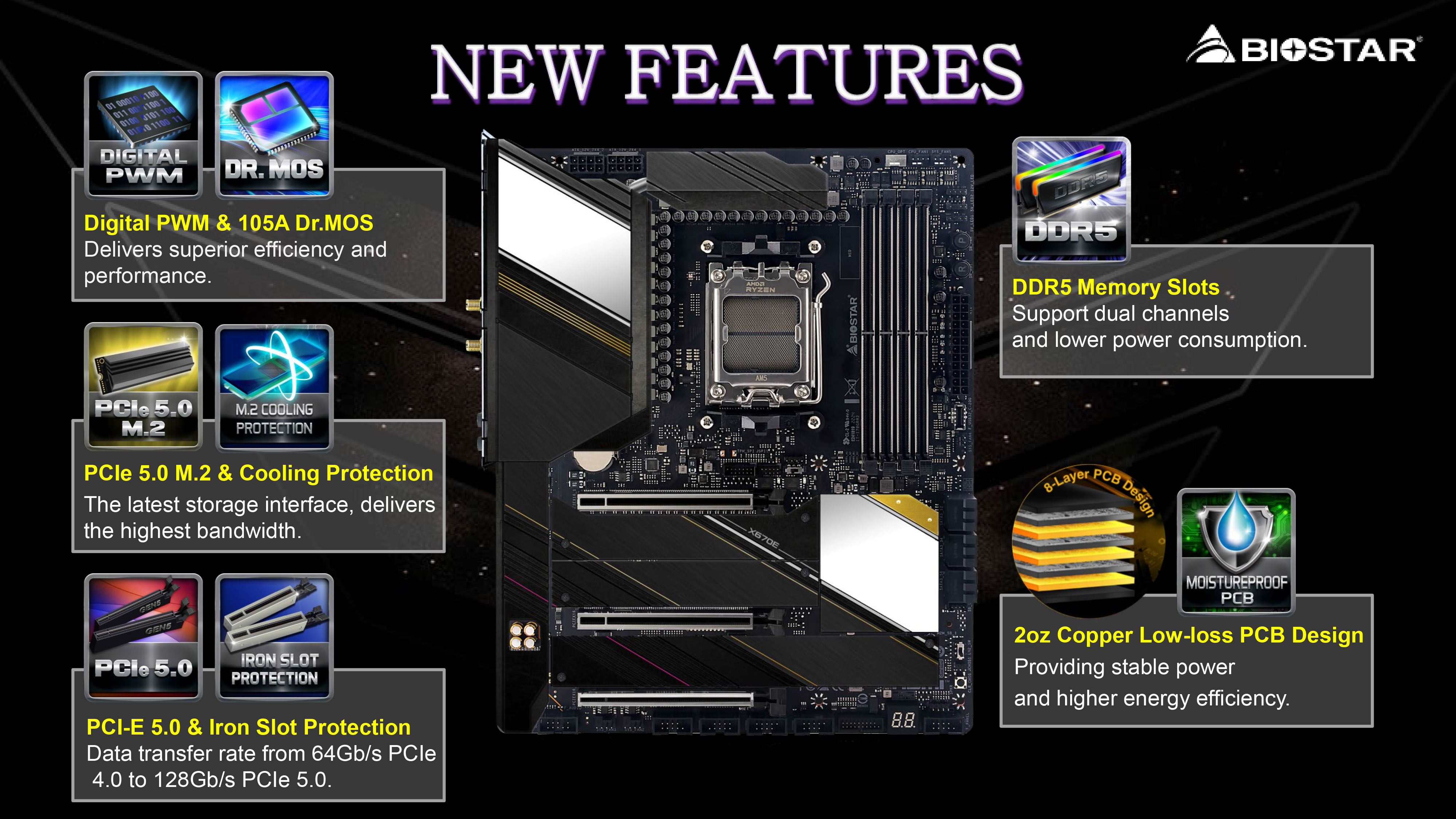
Gigabyte
Gigabyte came prepared with a comprehensive presentation that showcased several of its upcoming boards. The X670E Aorus Xtreme leads the way with an 18+2+2 VRM, 10G LAN and support for up to four PCIe 5.0 M.2 drives.
The Aorus Master reverts to 2.5G LAN and two PCIe 5.0 + two PCIe 4.0 M.2 slots but is also surely going to be a lot cheaper than the Xtreme.
The Aorus Pro AX and Aorus Elite AX are set to take the place of the popular X570 versions and look to provide well balanced feature sets at affordable prices.
Gigabyte’s rep confirmed that a Tachyon model was in development, but it would not be based on X670. Interesting!

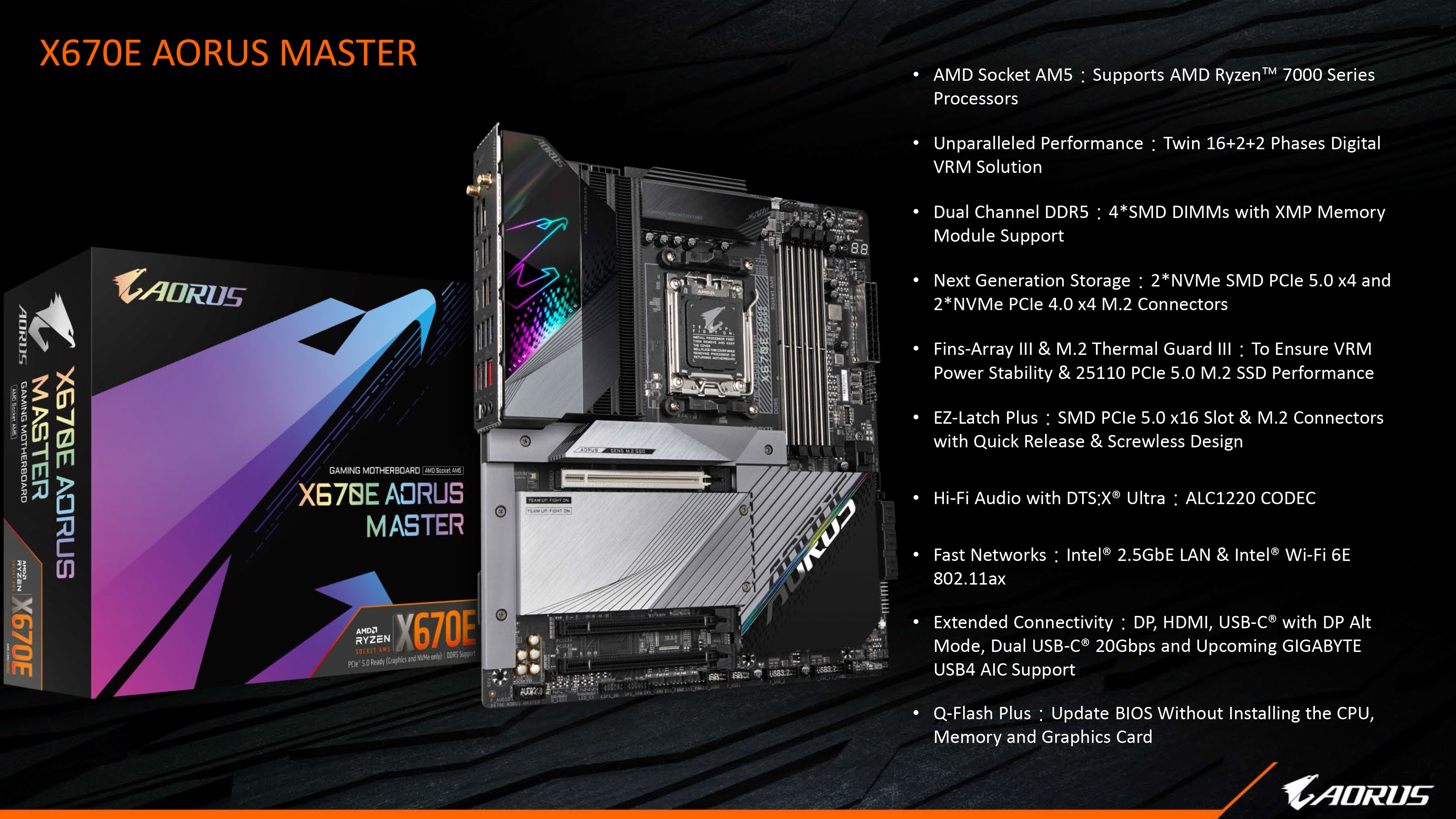
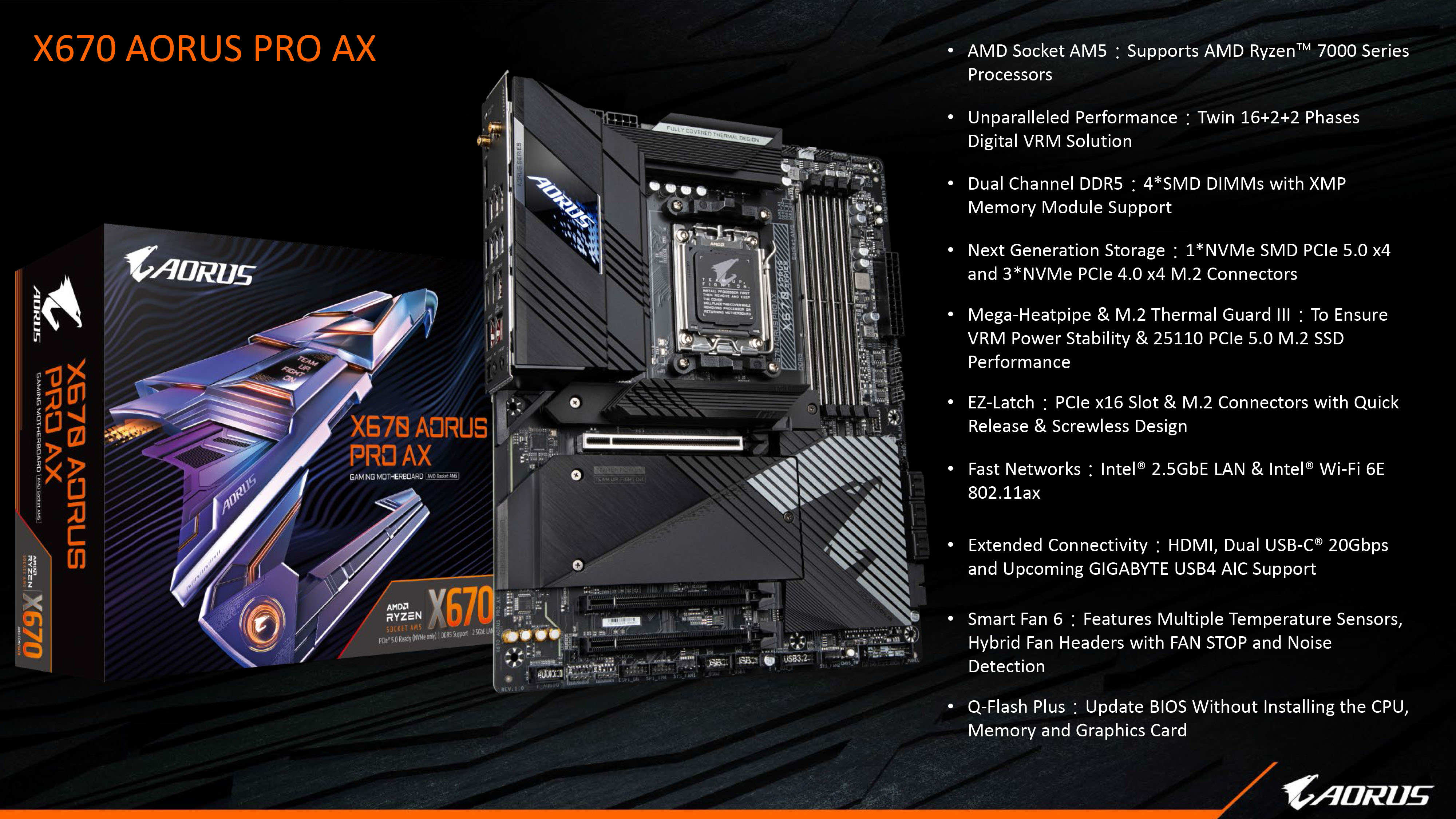
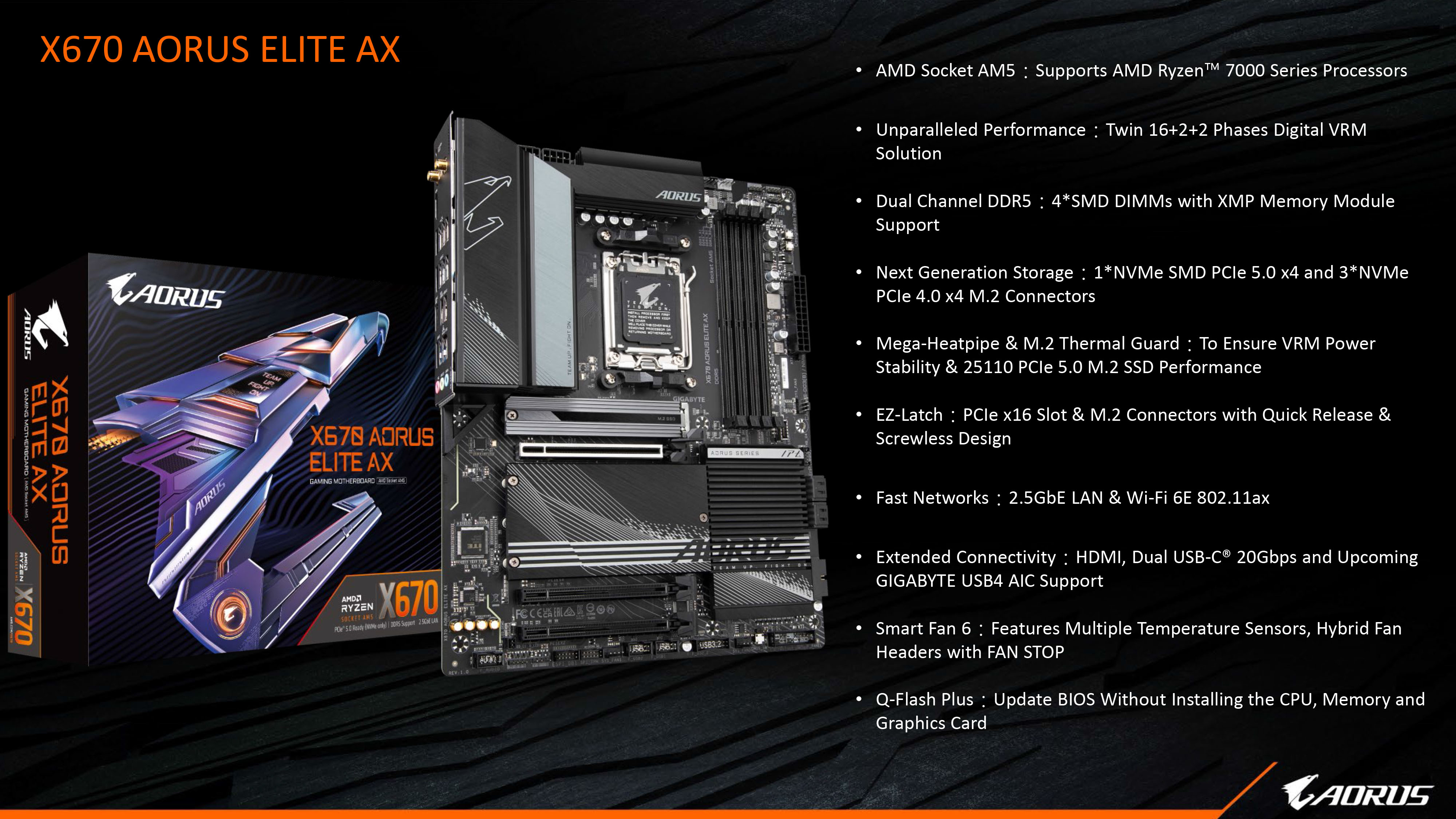
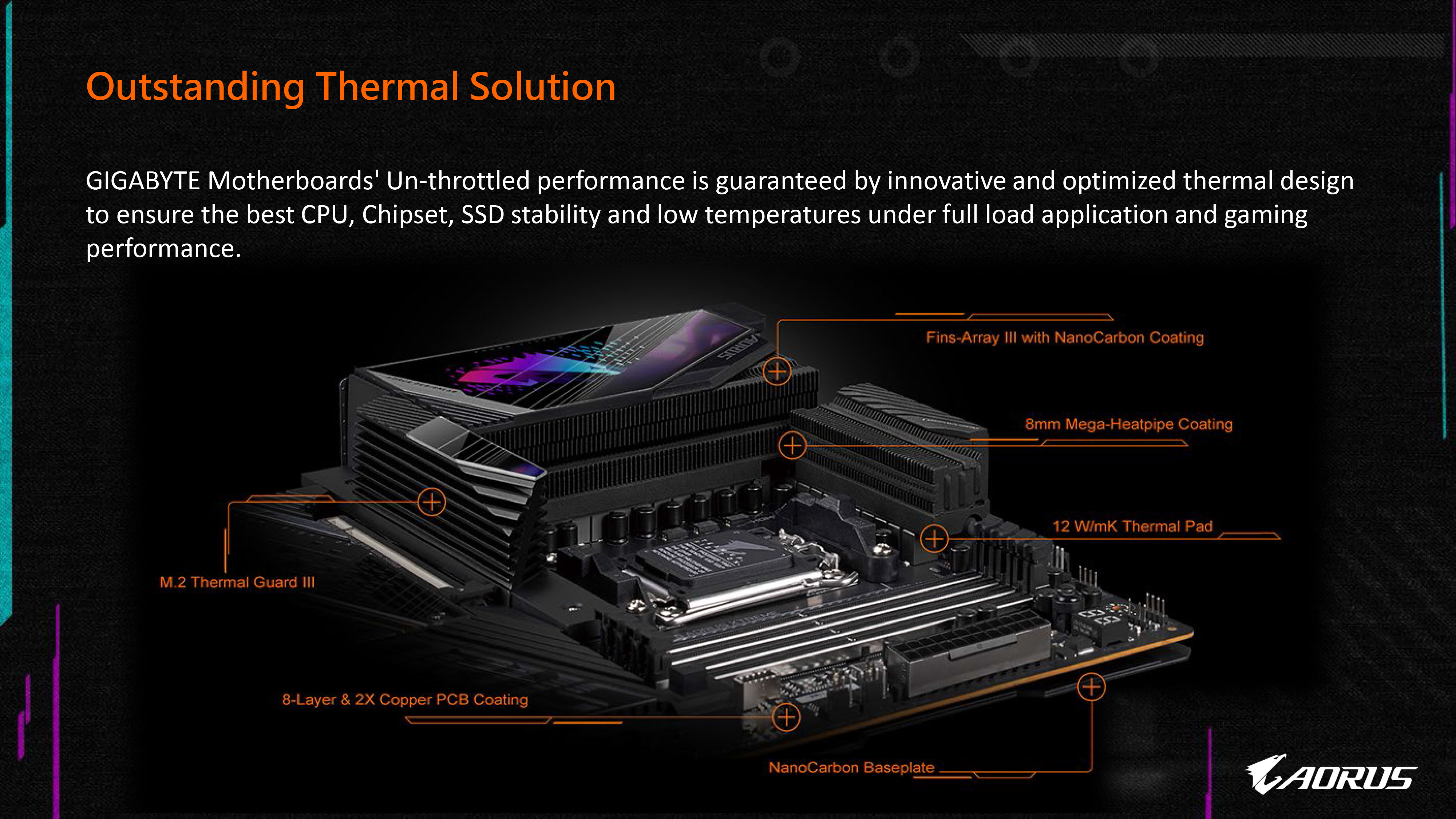
MSI
MSI's X670E range is topped by the MEG X670E Godlike. It's a beast, and may end up being the most expensive X670E board if current Godlike pricing is any indicator. It's packed with features including a monster VRM, with a finned heat sink array, a PCIe 5.0 m.2 expansion card and 10G LAN.
The MEG Ace hardly loses anything in comparison, keeping the M.2 expansion card and 10G LAN. The X670E Carbon Wi-Fi is more of a sweet spot gaming model, dropping most of the over the top features.


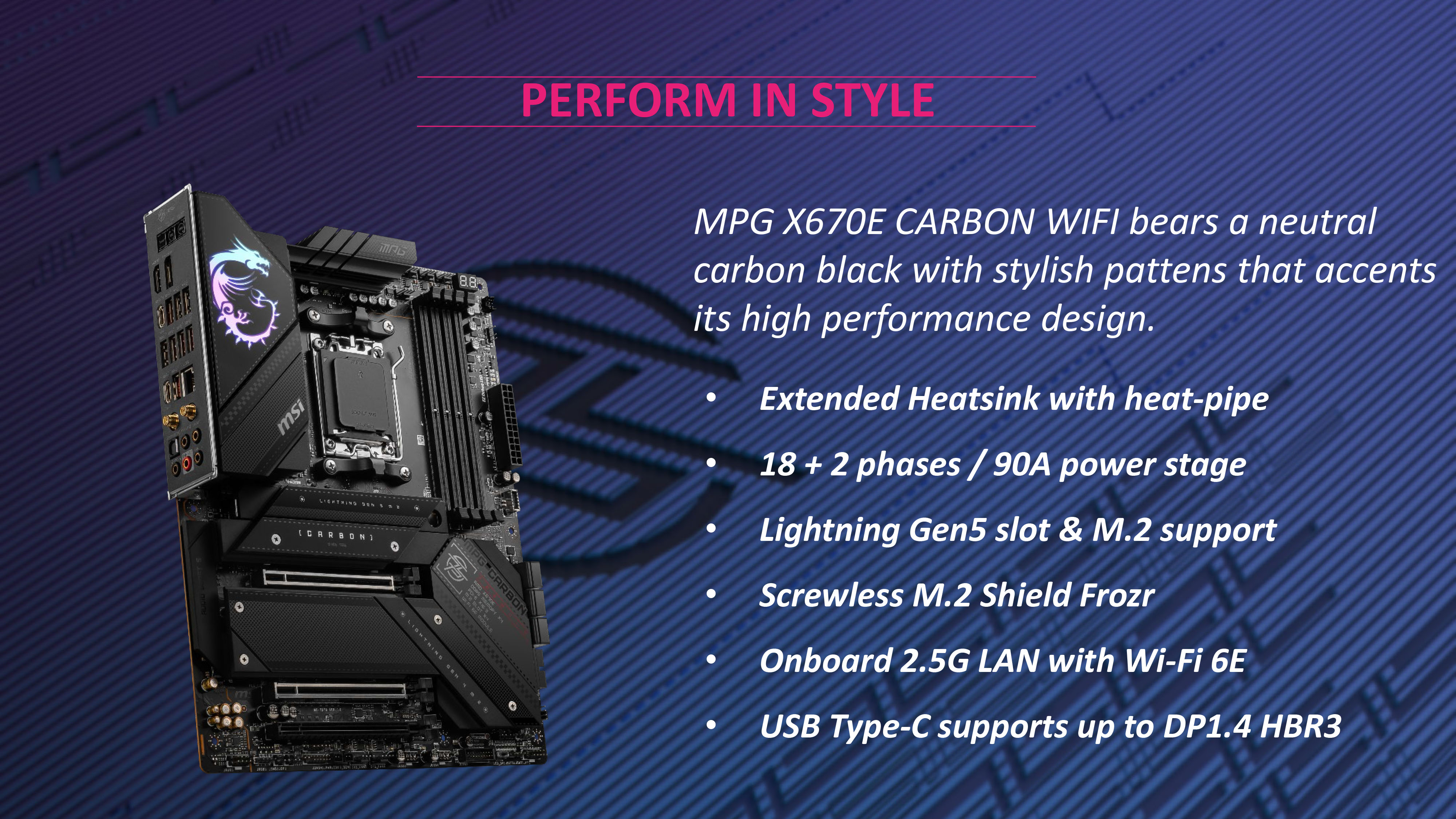
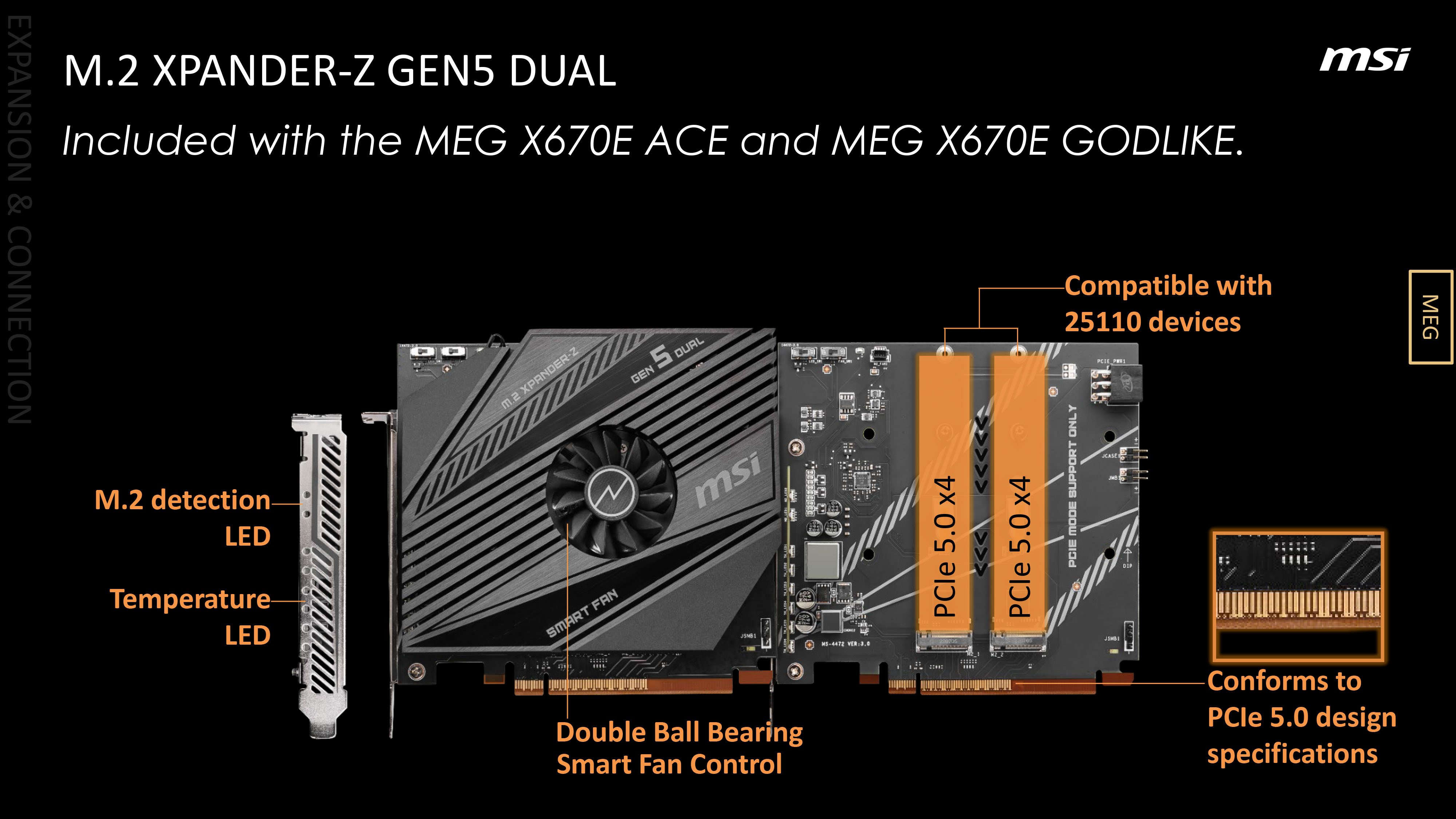
These are mostly high end motherboards and for sure many of them will be very expensive, but it's good to see the X670E chipset (that's actually chipsets) won't be exclusive to flagship models. We can expect more attractively priced X670 non-E motherboards and B650 boards to follow. PC Gamer will have full coverage of Ryzen 7000 series CPUs and AM5 motherboards in the weeks and months ahead. Stay tuned!

Chris' gaming experiences go back to the mid-nineties when he conned his parents into buying an 'educational PC' that was conveniently overpowered to play Doom and Tie Fighter. He developed a love of extreme overclocking that destroyed his savings despite the cheaper hardware on offer via his job at a PC store. To afford more LN2 he began moonlighting as a reviewer for VR-Zone before jumping the fence to work for MSI Australia. Since then, he's gone back to journalism, enthusiastically reviewing the latest and greatest components for PC & Tech Authority, PC Powerplay and currently Australian Personal Computer magazine and PC Gamer. Chris still puts far too many hours into Borderlands 3, always striving to become a more efficient killer.

